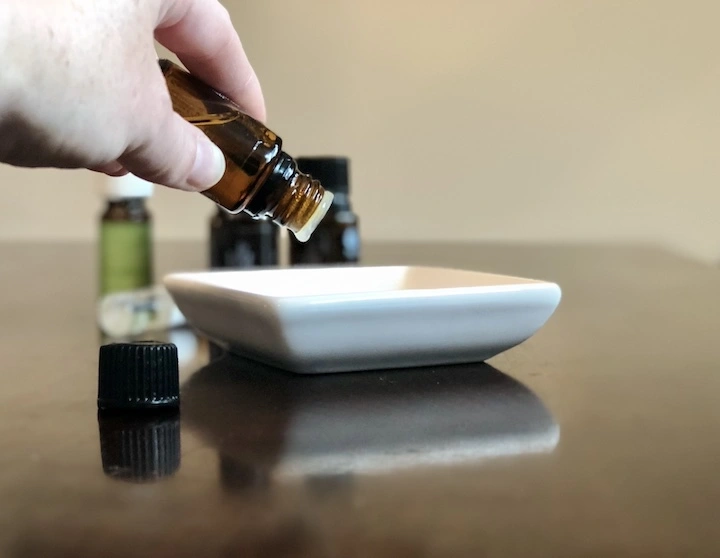
31 octobre 2024
Mastering the art of professional essential oil synergies
Professional aromatherapy is based on a fundamental principle: synergy. More than just a simple mixture, an essential oil synergy is a true composition where each element is carefully chosen for its biochemical properties and interaction with other components. This subtle science enables preparations whose effectiveness far exceeds the simple addition of each essential oil's properties.
In a context where demand for natural and effective solutions continues to grow, mastering professional formulation techniques becomes a major asset. Whether you're an experienced aromatherapist or a practitioner-in-training, creating essential oil synergies requires precise knowledge and rigorous methodology.
This comprehensive guide reveals the 7 golden rules that will enable you to create effective and safe professional synergies. These techniques, validated by scientific research and aromatherapy experts' experience, will guide you step by step toward excellence in formulation.
REMEMBER: A successful synergy relies on deep understanding of essential oils' biochemical properties and their interactions.
What you will learn from this article:
The three essential points to remember from this article on formulating professional essential oil synergies are:
- Quality and mastery of fundamentals are paramount: It is essential to understand biochemical families and select high-quality chemotyped essential oils to ensure the efficacy and safety of your synergies.
- Technical precision is indispensable: Whether in dosages (between 0.5% and 30% depending on usage), the number of essential oils (ideally 3 to 5), or formulation techniques (in choosing essential oils relative to intended objectives), every detail counts in creating an effective professional synergy.
- Safety and conservation are inseparable from practice: Documenting your creations, respecting testing protocols, using appropriate containers (amber glass), and following conservation rules are aspects as important as the formulation itself.
Rule No. 1: Master the fundamentals
The first rule, fundamental and indispensable, consists of deeply understanding the biochemical composition of essential oils. This knowledge constitutes the cornerstone of any successful formulation. Without it, creating synergies is more a matter of chance than professional expertise.
Essential oils are complex substances containing dozens of different molecules. Each biochemical family possesses its own therapeutic properties and usage specificities. Mastering these components allows not only to predict potential interactions between essential oils but also to optimize their effectiveness while ensuring the safety of preparations.
Biochemical families: the foundation of everything
Each essential oil contains several families of molecules that determine its properties. Among the 15 biochemical families of essential oils, here are the main ones:
- Phenols: powerful anti-infectives
- Monoterpenes: stimulating and tonic action
- Esters: calming and anti-inflammatory properties
- Oxides: expectorant and mucolytic action
- Ketones: mucolytic, lipolytic, and cicatrizing action
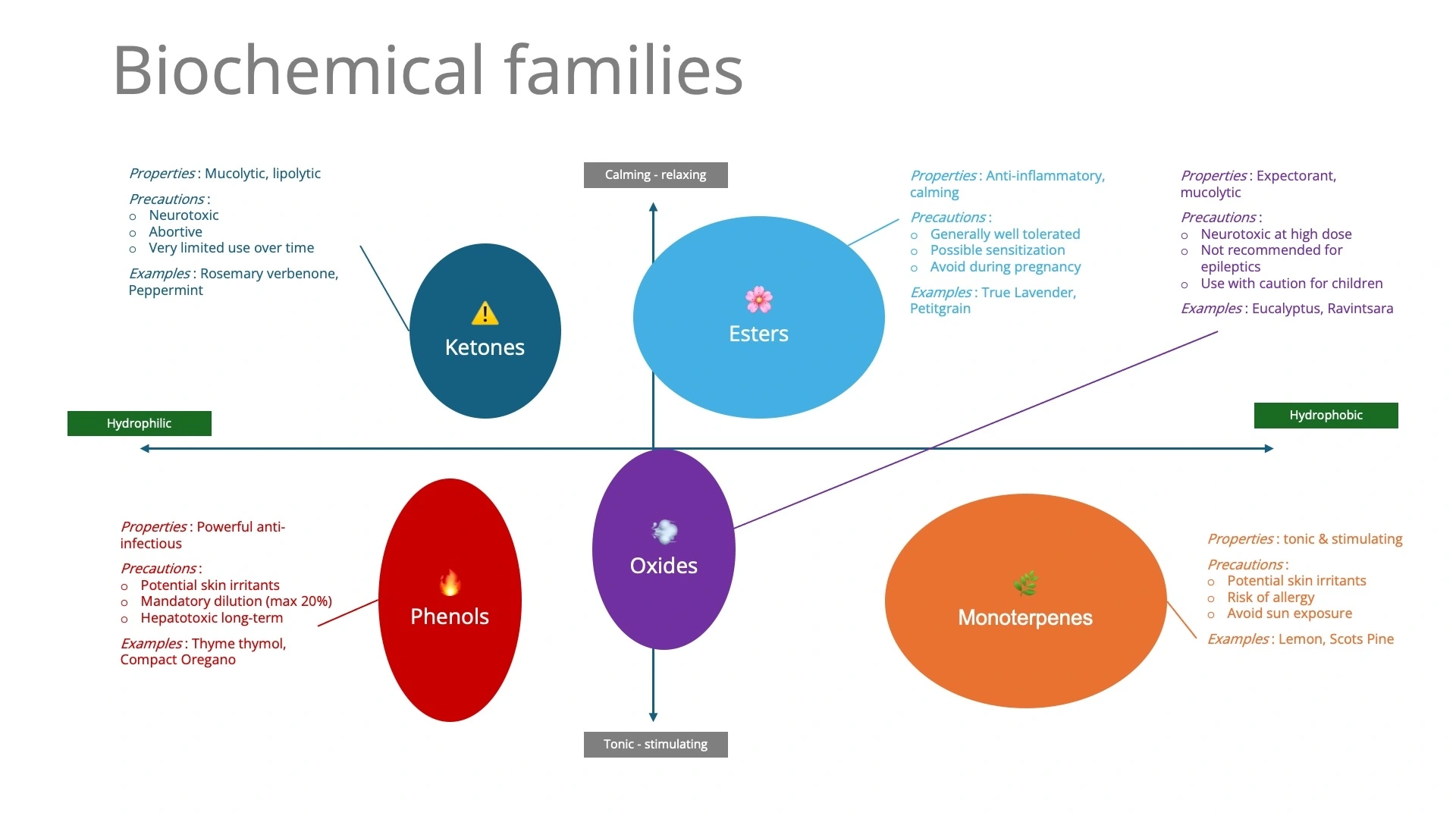
REMEMBER: Synergy is not about adding properties, but making them interact optimally.
The importance of chemotype
The chemotype (or chemiotype) is the biochemical identity card of an essential oil. It indicates the main active molecule. For the same plant, it can even vary according to:
- The cultivation environment
- The harvest period
- The part of the plant distilled
It is essential to select the right chemotype in relation to the desired aim, mainly for essential oils from plants that have several variants, such as lavender (True Lavender, Spike Lavender, Lavandin...), rosemary (Rosemary cineole, Rosemary verbenone...), thyme (Thyme thymol, Thyme thujanol...), or eucalyptus (Radiata Eucalyptus, Lemon-scented Eucalyptus, Eucalyptus globulus...).
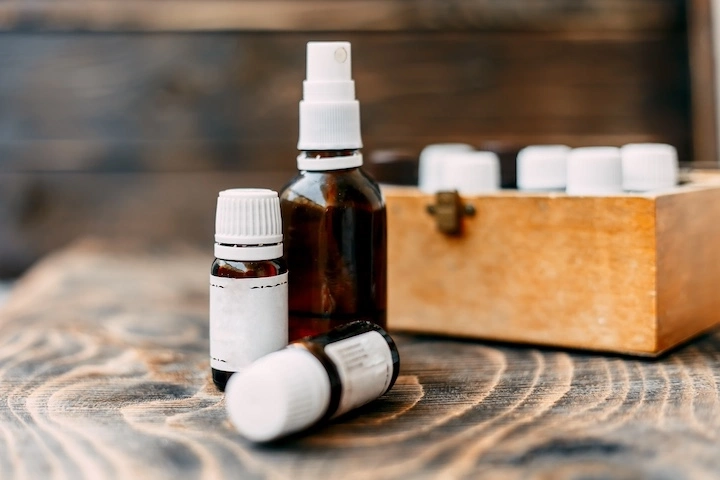
Rule No. 2: Selecting quality
The quality of essential oils is the foundation of any successful professional synergy. Beyond simple marketing claims, there are precise and objective criteria for selecting therapeutic-grade essential oils. This crucial step determines not only the effectiveness of your preparations but also their safety of use.
The selection of essential oils requires an in-depth knowledge of quality standards and recognized certifications. In this section, we will explore the essential criteria that will allow you to build a reliable essential oil base for your professional formulations.
Essential quality criteria
To ensure the excellence of your synergies, systematically verify:
- Complete botanical name (genus, species, subspecies)
- Producing organ (leaf, flower, bark...)
- Chemotype (HECT)
- Growing method (preferably organic)
- Country of origin
- Extraction method
IMPORTANT: The mention "100% pure and natural" is not sufficient. Demand chemotyped essential oils with complete traceability, such as those provided by Landema.
Preferred certifications
Labels that guarantee quality according to strict specifications:
- Organic Agriculture (AB)
- COSMOS
- Nature & Progress
Find an overview of different labels in the article "Navigating organic labels: what you need to know before getting started".
Traceability as guarantee
A professional supplier must provide:
- Analysis certificates (chromatography)
- Detailed technical sheets
- Safety data sheets
- Allergen certificates
- Batch numbers and expiration dates
For more information on technical documents, refer to the article "Essential oils: decypher technical and safety data sheets like an expert".
REMEMBER: The quality of your synergy can never exceed that of its component essential oils. Invest in professional quality oils.
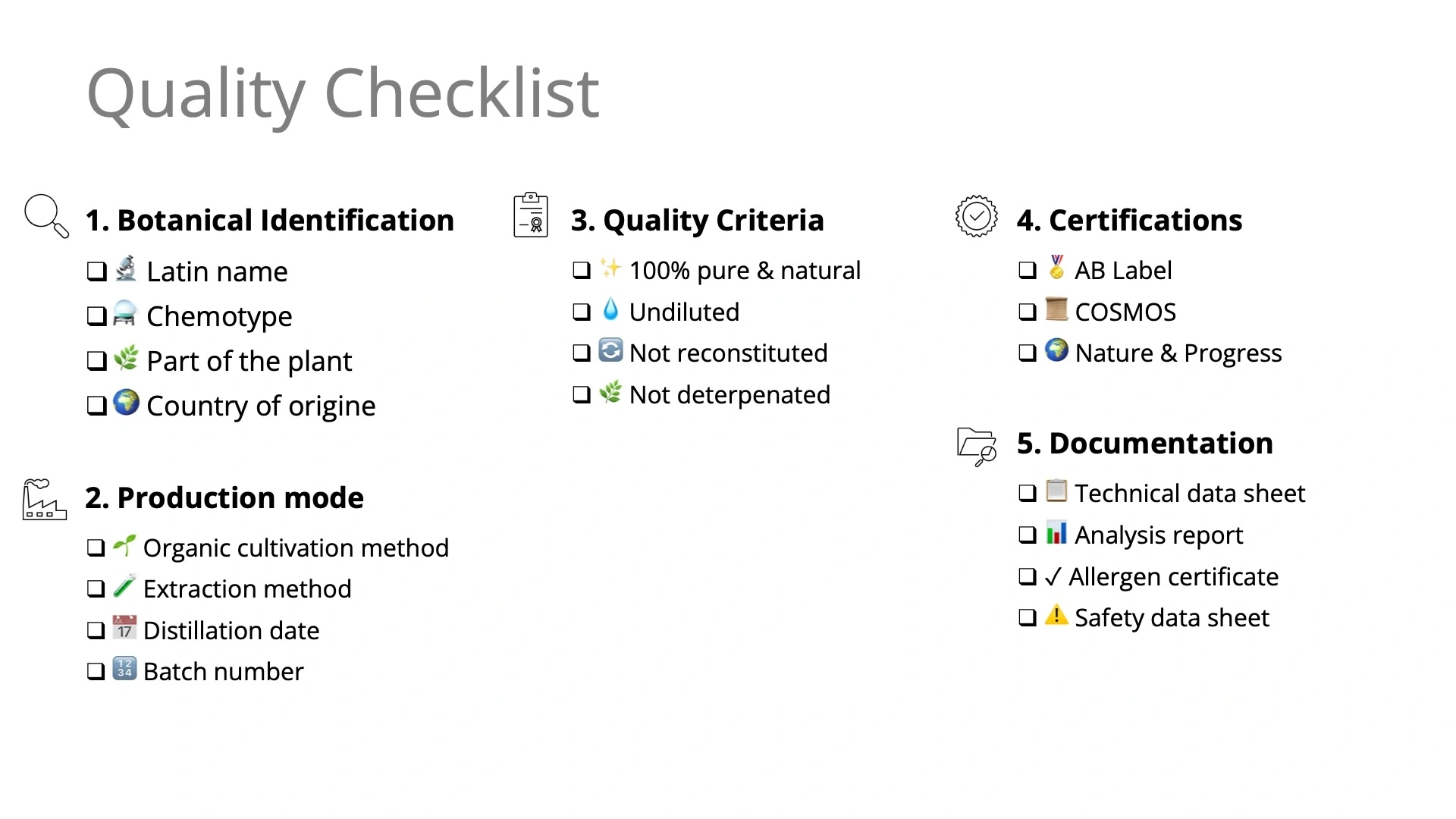
Rule No. 3: Formulation techniques
Professional synergy formulation is an art based on precise scientific principles. This step requires a deep understanding of interactions between different essential oils and their biochemical and organoleptic properties. Mastering formulation techniques will enable you to create synergies that are not only effective but also pleasant to use.
Beyond simple mixing, professional formulation involves consideration of olfactory structure, optimal proportions, and biochemical compatibilities. This methodical approach ensures the creation of balanced and effective synergies.
Optimal number of essential oils for a balanced synergy:
- Minimum: 2-3 essential oils for simple formulas
- Maximum: 5-7 essential oils for complex formulas
- Ideal: 3-5 essential oils for optimal synergy
REMEMBER: The more essential oils you add, the more complex it becomes to control their interactions.
Ratios and proportions: the art of precise formulation
Creating an effective synergy relies on a rigorous 5-step methodology. This professional approach guarantees balanced and effective blends.
1. Define the therapeutic objective
Before any formulation, ask yourself these essential questions:
- What is the main desired effect?
- What are the desired secondary effects?
- For which method of use?
- For what duration of use?
REMEMBER: The more precise your objective, the more effective your synergy will be.
2. Prioritize properties
Classify desired properties by order of importance:
- Main effect: 50-60% of the formula
- Major secondary effect: 25-30%
- Complementary effect: 15-20%
3. Select essential oils
For each desired property:
- Identify the 2-3 most effective essential oils
- Verify their biochemical compatibility
- Confirm their olfactory complementarity
4. Calculate proportions
Example for an anti-stress synergy (10 ml):
- Relaxing effect (60%): True Lavender essential oil (Lavandula angustifolia) = 6 ml
- Balancing effect (25%): Petitgrain essential oil (Citrus aurantium var amara) = 2.5 ml
- Harmonizing effect (15%): Ylang-ylang essential oil (Cananga odorata) = 1.5 ml
5. Convert to drops
For optimal precision:
- 1 ml = 30 drops of essential oil
Therefore for our example:
- True Lavender: 6 ml × 30 = 180 drops
- Petitgrain: 2.5 ml × 30 = 75 drops
- Ylang-ylang: 1.5 ml × 30 = 45 drops
IMPORTANT: Always use precise droppers and meticulously record your calculations to ensure the reproducibility of your formulas.
This systematic method allows for the creation of professional synergies whose effectiveness is based on precise and thoughtful proportions.
If we also consider the organoleptic qualities of the synergy, we can take into account the olfactory pyramid rule:
- 50% for top notes (immediate action)
- 30% for heart notes (main action)
- 20% for base notes (fixative)
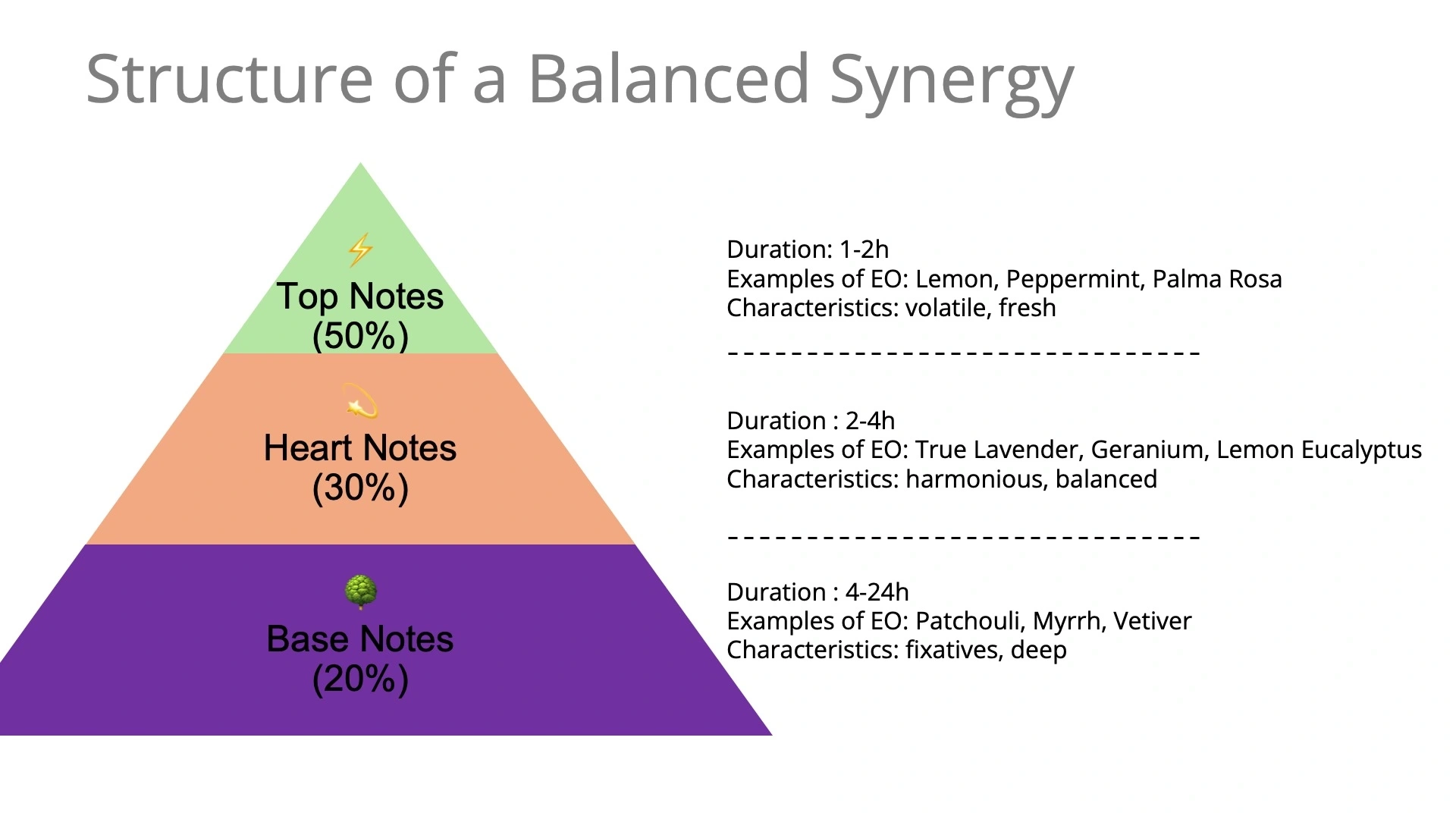
Biochemical compatibilities
For an effective synergy, verify:
- Complementarity of biochemical families
- Potential contrary interactions, for example between tonic and calming essential oils
- Balance of therapeutic properties
PRACTICAL EXAMPLE - "Respiratory Plus" synergy
Purpose: Clear respiratory passages
Composition:
- Eucalyptus radiata essential oil (Eucalyptus radiata) at 40%: oxide family, rich in 1,8-cineole - helps evacuate secretions by fluidifying them with its expectorant and mucolytic action, and prevents nasal discharge
- Thyme thuyanol essential oil (Thymus vulgaris) at 35%: monoterpenol family, rich in thuyanol - antibacterial and antiviral, remarkable in all respiratory infections, also stimulates immunity
- Niaouli essential oil (Melaleuca quinquenervia) at 25%: oxide family, rich in 1,8-cineole - decongests nose and bronchi, immunostimulant and antiviral
Precise dosages:
In a 10ml bottle, mix:
- 4ml of Eucalyptus radiata = 120 drops
- 3.5ml of Thyme thuyanol = 105 drops
- 2.5ml of Niaouli = 75 drops
Usage instructions:
- By inhalation: 3-4 drops of the synergy on a tissue
- By diffusion: 6-8 drops of the synergy in a diffuser
- By massage on the chest: dilute to 20% in a vegetable oil
Conservation period: 24 months in an amber glass bottle
Specific precautions: Not recommended for pregnant women, breastfeeding mothers, and children under 3 years
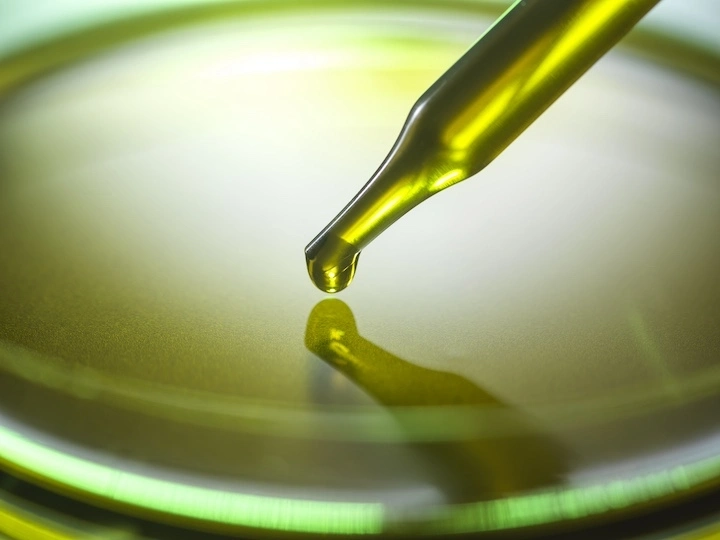
Rule No. 4: Professional dosages
Professional dosage precision is a fundamental skill that distinguishes amateurs from professionals in aromatherapy. This technical step requires particular attention and a thorough understanding of dilution calculations. Mastering dosages not only optimizes the effectiveness of your synergies but also ensures their safety.
In this section, we will address precise calculation methods and the necessary tools to create reproducible professional preparations. This technical expertise is essential for creating reliable and safe synergies.
Basic calculations
For professional preparation, remember these equivalences:
- 1 ml ≈ 25-30 drops of essential oil
- 1 teaspoon ≈ 5 ml
- 1 tablespoon ≈ 15 ml
IMPORTANT: Always use graduated pipettes or precise droppers for your measurements.
Recommended dilutions
According to intended use:
- Cosmetic action: 0.5 to 1%
- Restorative action: 3%
- Wellness action: 5%
- Muscular action: 10%
- Local therapeutic action: up to 30%
PRACTICAL EXAMPLE - "Professional Muscular" synergy
Purpose: Relieve tension and muscle soreness
Composition for 30 ml of massage oil with 10% essential oil concentration:
- Wintergreen essential oil (Gaultheria fragrantissima) at 40%: 1.2 ml or 36 drops
- Lemon Eucalyptus essential oil (Eucalyptus citriodora) at 35%: 1.05 ml or 31 drops
- Lavandin Super essential oil (Lavandula intermedia super) at 25%: 0.75 ml or 22 drops
- Arnica macerate (Arnica montana): fill to 30 ml
Usage instructions:
- Local massage: 2-3 applications per day
- Maximum duration of use: 7 consecutive days
Specific precautions:
- Do not use if on anticoagulant treatment
- Avoid sun exposure after application
- Not recommended for pregnant women
Conservation period: 12 months in an amber glass bottle
REMEMBER: The precision of dosages is directly linked to the effectiveness of your synergy. A difference of a few drops can modify the result.
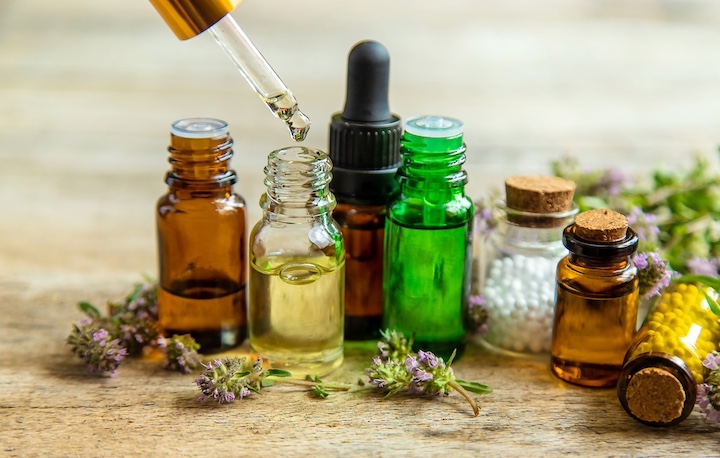
Rule No. 5: Eco-responsible approach
Modern professional aromatherapy cannot ignore environmental challenges. Beyond therapeutic effectiveness, creating synergies must now integrate an ecological and sustainable dimension. This responsible approach influences each step of formulation, from the choice of raw materials to final packaging.
The eco-responsible approach in aromatherapy is not limited to using organic essential oils. It encompasses the entire process of creating, producing, and preserving synergies. This holistic vision not only helps preserve the environment but also optimizes the quality and effectiveness of your preparations.
Sustainable containers
For environmentally respectful practice:
- Favor recyclable amber glass bottles
- Reuse containers after sterilization
- Avoid plastic, even recyclable
REMEMBER: Amber glass protects your synergies while respecting the environment.
Resource optimization
To minimize your ecological impact:
- Calculate dosages precisely to avoid waste
- Prepare small quantities regularly
- Favor local essential oils when possible
- Choose producers and suppliers committed to sustainable practices such as Landema
Choosing organic essential oils
Eco-responsible selection criteria:
- Organic Agriculture, Fair for Life... certifications
- Local or sustainable production
- Complete traceability
- Respect for biodiversity
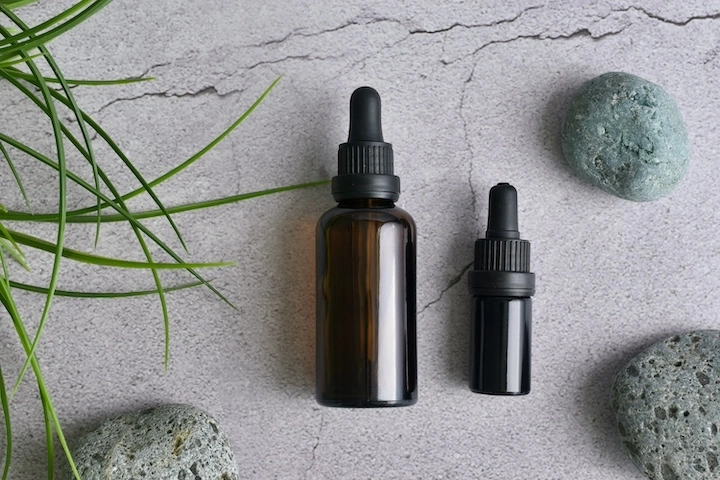
Rule No. 6: Safety of preparations
Safety is the cornerstone of any professional practice in aromatherapy. The potency of essential oils, combined with the complexity of synergies, demands a methodical and rigorous approach to ensure safe and effective preparations. This fundamental rule encompasses both technical and documentary aspects of your practice.
Creating professional synergies requires implementing strict protocols, from formula validation to final use. This methodological rigor not only ensures the safety of your preparations but also builds a credible and sustainable professional practice.
Testing protocols to validate a new synergy:
- Stability test: observe the mixture for 48 hours
- Skin test: apply a diluted drop to the forearm
- Olfactory test: check the evolution of aromatic notes
- Documentation of results
IMPORTANT: Any sign of instability (separation, color change, unusual odor) should lead to immediate discontinuation of use.
Documentation and traceability
For each synergy, create a technical sheet including:
- Exact composition with percentages
- Manufacturing and expiration dates
- Storage conditions
- Specific precautions for use
- Results of tests performed
Essential precautions
Major points of vigilance:
- Respect absolute contraindications
- Check for possible interactions
- Adapt dosages according to populations
- Maintain a clean working environment
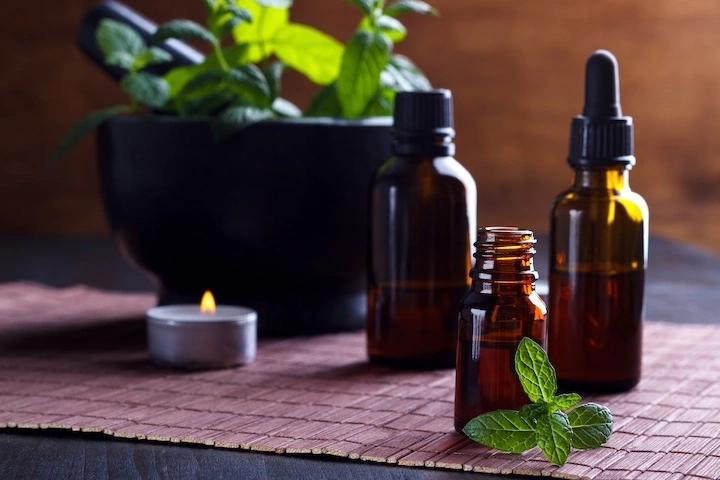
Rule No. 7: Optimal conservation
Preserving essential oil synergies is an art as crucial as their formulation. A poorly preserved synergy can not only lose its effectiveness but also become potentially dangerous. This final rule will allow you to master all aspects of conservation to ensure the stability and quality of your preparations over time.
The lifespan of a synergy depends on many factors that are essential to control: from storage conditions to interactions between different components. Optimal conservation is the guarantee of the effectiveness and safety of your professional preparations.
Storage ideal conditions
To preserve your synergies:
- Temperature: between 5°C and 25°C
- Environment: dry and dark
- Containers: airtight amber glass bottles
- Location: closed cabinet, out of reach of children
IMPORTANT: Light, heat, and oxygen are the three main enemies of your synergies.
Lifespan according to composition
The preservation duration varies according to:
- Essential oils used (2-5 years)
- Presence of vegetable oils (6-12 months)
- Type of container used
- Storage conditions
REMEMBER: Precise labeling with the manufacturing date and composition is essential for optimal traceability.
Towards excellence in essential oil formulation
The creation of professional essential oil synergies is an art that demands rigor, patience, and expertise. By following these 7 golden rules - from mastering biochemical fundamentals to optimal conservation - you now possess the keys to formulate effective, safe, and sustainable blends.
Remember that each synergy is unique and must be approached with method and precision. The quality of your preparations will always depend on:
- Rigorous selection of essential oils
- Mastery of formulation techniques
- Adherence to safety protocols
- Adoption of an eco-responsible approach
To support you in your practice, Landema provides:
- A complete range of certified organic essential oils
- Professional technical documents
- Containers suitable for formulation
- A personalized advisory service with its customer service available by phone and email
Start creating your own professional synergies now by applying these fundamental principles. The Landema.com online store and its wide selection of essential oils are waiting for you!
Items that could
interest
Our essential oils
will simplify your life
FAQ
As a customer of the Landema website, did you know that we also have a physical store? If you live in the Landes, in New Aquitaine or are planning to stay there, do not hesitate to visit us! We are located in Le Sen, on the Biolandes site, very close to Labrit, Roquefort, and Mont-de-Marsan, in the heart of the Landes de Gascogne regional natural park.
Essential oils are natural aromatic substances extracted from plants. They are often used in aromatherapy for their health and wellness benefits. Essential oils can be extracted from different parts of plants, such as leaves, flowers, barks, roots or seeds. The use of essential oils dates back to ancient times, where they were used for their medicinal properties and to perfume cosmetics and skincare products.
Landema invites you to discover our product range composed of essential oils, absolutes, vegetable oils, macerates or hydrosols. Our catalog will grow over time, stay informed by subscribing to our newsletter.
We invite you to discover our practical guides and our blog where you can discover our advice and our cases of use of essential oils.
Your wishlist
You must be logged in to post a comment.
Login, or create an account
There is no comment for this article yet